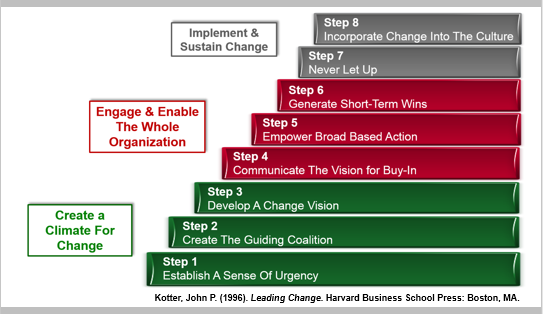When I find excellent source material featuring incredible insight, I like to spotlight authors and their work.
While researching a project, I discovered a publication, Three Crucial Behaviors for Successfully Leading Innovation[1], written by Michael T. Mitchell, senior faculty at the Center for Creative Leadership. Mitchell’s academic research focuses on the people component of innovation. His latest work focuses on professional characteristics of the “repeating contributor to innovation” in large organizations.

Mitchell argues that there are four, very key differences between innovation leadership and operations leadership. Innovation leadership is both different and difficult, filled with emotional stakes and fluctuations in productivity. Here’s why…
First, innovation is ambiguous.
Mitchell notes that the outcome of any innovation effort is ambiguous and uncertain. Often, it’s impossible for leaders to know without doubt if innovators are pursuing the right idea at the right time. This means innovation managers require great emotional fortitude, resilience, and energy to persist in their work.
Second, innovation is high-profile.
Innovation efforts of most organization are highly visible. Mitchell notes that the board and executive team are watching closely. For innovation managers, high visibility creates enormous pressure to succeed, generating greater anxiety and taking a greater emotional toll.
Third, innovation is risky.
Because it’s unpredictable, Mitchell adds that a high risk of failure is built into any innovation process. Outcomes lead to one of two paths: Success or failure. This creates an emotional roller coaster as the work advances or stalls. The highs are higher, the lows are lower, and the ups and downs can be emotionally draining.
Fourth, innovation is uncharted territory.
Innovation means moving into uncharted territory. The role of innovators is to cut a new path without knowing for sure if it will take them where they want to go, how long it might take, or how much effort will be required to get there.
These four attributes – ambiguity, visibility, risk, and uncharted territory – can make innovation activities seem riskier, especially to those involved. Mitchell says persistence and success requires more risk taking and greater emotional tenacity.
This information emphasizes the need for supporting those who lead innovation, so that innovators and their teams can understand and navigate these unique leadership challenges. For Mitchell’s full report, please see: https://www.ccl.org/wp-content/uploads/2017/08/3-Crucial-Behaviors-Successfully-Leading-Innovation.pdf.
[1] Mitchell, Michael T. (2017). White Paper: 3 Crucial Behaviors for Successfully Leading Innovation. Center for Creative Leadership.




